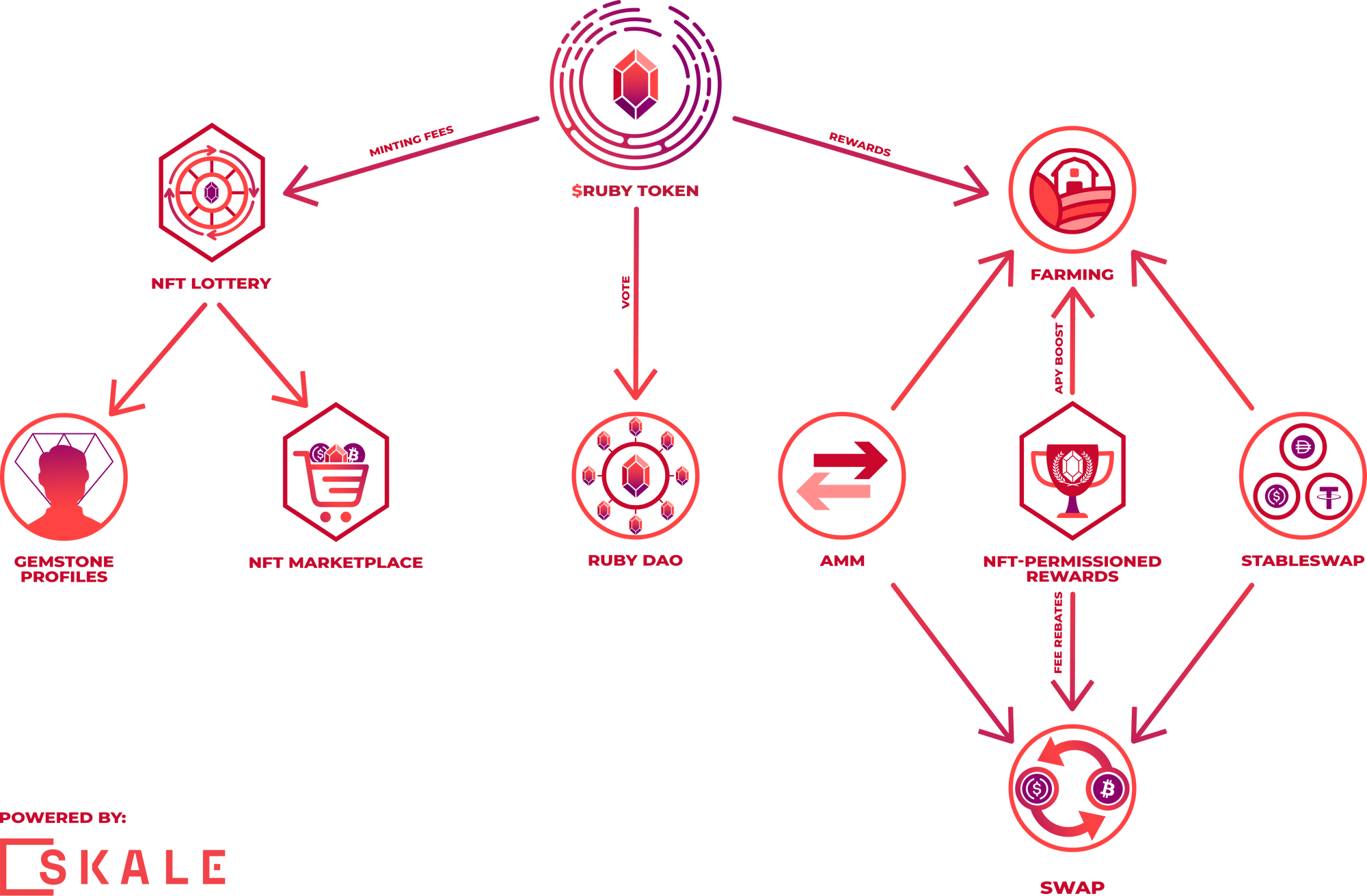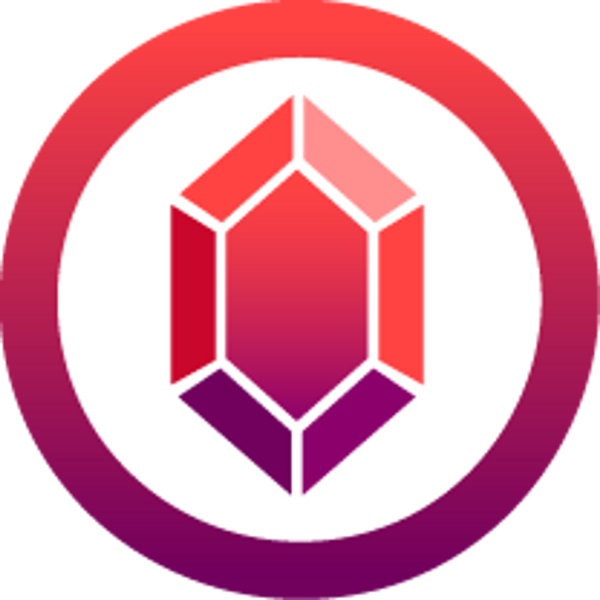As the first NFT-powered AMM and the foremost decentralized exchange on the SKALE network, Ruby.Exchange promises to deliver significant value for the Ethereum DeFi scene.
While Ruby's foundation is an Automated Market Maker (AMM), trustless token exchange is only one element of the functionality the Ruby Exchange Protocol will provide. Here's how the core features of the platform will work and fit together.
Overview Of The Ruby Exchange Protocol
Ruby.Exchange combines multiple features and technologies to provide far-reaching functionality for the many different stakeholders in the Ruby and wider SKALE ecosystems.

Ruby's Dual DEX Model
Ruby.Exchange is built around two AMMs, which enable secure exchange of tokens against pools of liquidity provided by users. Prices are set by an algorithm according to supply and demand. One AMM uses the "XY=K" algorithm for crypto tokens, and the other is a StableSwap, which allows traders to swap popular stablecoins with minimal slippage. Ruby's overall architecture is designed to maximize liquidity across all assets.
The RUBY Token
RUBY is the native token of the Ruby Exchange Protocol. Minted on Ethereum mainnet, RUBY will have a maximum supply of 200 million. The token will be used to distribute rewards to liquidity providers, to pay for NFTs, and as the governance token for the Ruby DAO. As the community grows, RUBY holders will be able to vote for new features and development priorities, ultimately taking full responsibility for every aspect of maintaining the protocol.
Pools And Farms
Ruby.Exchange will host a number of crypto and stablecoin pools, supporting popular tokens including BTC, ETH, SKL, USDT, USDC, USDP, and, of course, RUBY. Liquidity providers will receive a proportion of trading fees for all swaps made from these pools, and will also earn RUBY rewards on selected pools.
Gemstone NFTs
Ruby's gemstones are digital artworks, created from a broad range of randomly-generated parameters—ensuring that users never know whether they will receive a rare and valuable NFT. Every user receives a gemstone profile image, and can generate new ones for a small fee (paid in RUBY) whenever they want. Future updates will allow users to mint gems that confer permissioned rewards, including trading fee rebates and yield farming APY boosts. Gemstones can be traded on Ruby's internal NFT marketplace.
Trade, Farm, Boost: The Ruby User Experience
Interaction with the Ruby Exchange Protocol will be hidden behind a powerful but user-friendly interface, abstracting away complexity and enabling anyone to benefit from the opportunities Ruby offers, while requiring minimal specialist knowledge of the DeFi sector.
Alice is a trader. She deposits 10,000 USDT to Ruby's S-Chain via the mainnet bridge and uses 5,000 USDT to purchase ETH. Upon making her first trade, she receives a randomly-generated profile NFT.
Alice believes the market has bottomed, and is long-term bullish on ETH. She deposits equal amounts of ETH and USDT to Ruby's liquidity pool. Alice knows that impermanent loss might reduce her profits if the price changes drastically, but she expects the RUBY rewards and trading fees she receives to far outweigh any potential for losses. She plans to hold her LP position for at least a year as a part of a diversified portfolio strategy, knowing she can still withdraw her liquidity at any time if she needs to.
Bob has available capital and is disappointed with the returns offered by TradFi. He uses a fiat gateway partner to deposit $100,000 to Ruby's S-Chain in the form of USDC. Since capital preservation is a priority, he deposits the 100,000 USDC to Ruby's StablePool, knowing that this enables him to earn a return on his funds from fees and RUBY yield farming rewards without the risk of market volatility.
Bob wants to maximize his earnings, so he stakes the RUBY he receives for additional income in the single-sided RUBY pool. He also uses some of the RUBY to mint reward NFTs. The first one offers him a 2% APY boost on up to $10,000. The second one gives him +3% on up to $50,000, allowing him to increase his StablePool earnings by $1,500 per annum. He sells the first NFT for RUBY, which he also stakes, using the built-in NFT marketplace.
Powered By SKALE
Because Ruby is built on the SKALE network for Ethereum, every transaction on the platform is gas-free. Users can trade and farm with any amount of capital, without worrying about the costs that make such operations uneconomical on mainnet. SKALE users will be able to access services on any S-Chain, from fiat gateways and mainnet bridges to NFT marketplaces and games, using the SKALE IMA 2.0 Bridge.
Follow Ruby on Twitter and Telegram, or subscribe to the Ruby blog, for details on the upcoming launch of Ruby.Exchange.






